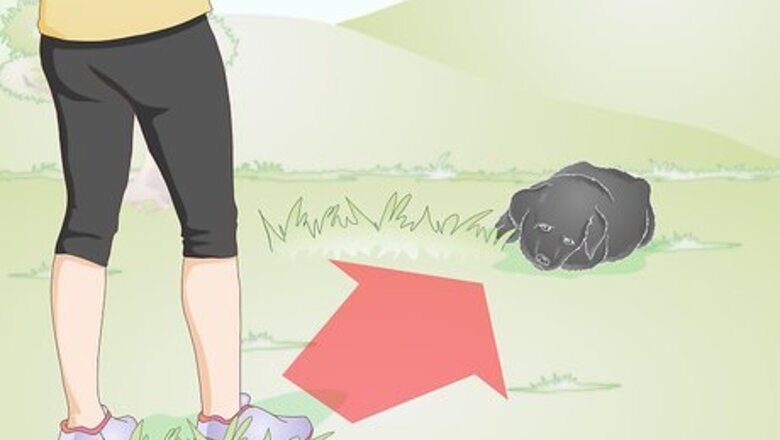
views
Assessing the Puppy's Injuries
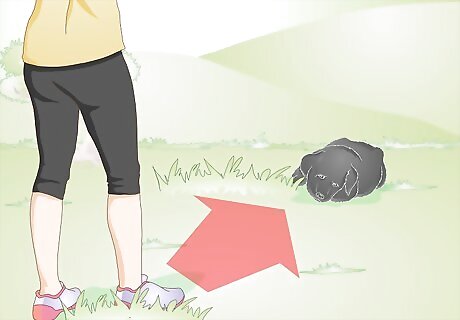
Stay at a safe distance at first. Before you approach a stray puppy, make sure the animal does not pose a threat to you. It is best to keep a safe distance from the animal while you try to figure out how serious its injuries are and what kind of help it needs. If you get too close to the puppy, it might bite you, especially if it is frightened or in a lot of pain.

Use caution when approaching the injured puppy. If the puppy does not seem aggressive or dangerous, speak calmly and move slowly as you get close to the puppy. Sudden movements might spook the animal. If you have some kind of food or dog treats available to you, try to show the pup that you mean no harm to it by offering up the treats or food as a gift.

Consider muzzling the puppy if it seems aggressive or scared. While this might not be necessary, some puppies will snap or bite if they feel scared or threatened. You can gently and carefully put a muzzle over its snout to keep it from biting you while you help it. Only try this if you feel it is necessary for you to stay safe. This only works for a long-snouted dog and won't work for a flat-faced breed like a pug. Be sure that the puppy is not vomiting before trying to muzzle it; if it vomits with a muzzle on it could choke. You can use a strip of towel, gauze, a knee high sock, or panty hose to gently tie the dog's muzzle shut.
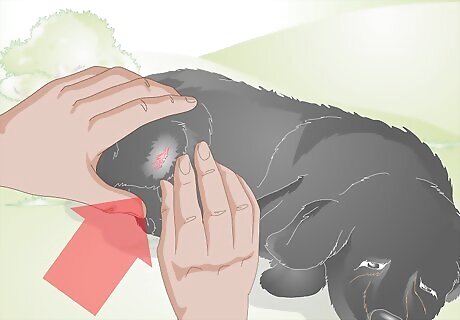
Determine how badly the puppy is injured. Some injuries require immediate emergency care, and other injuries are less severe and you can care for them yourself. While there may be internal injuries that you can't see, you can try to evaluate the situation and determine what you should do next based on how the puppy looks and acts. If you see lots of blood, or if the puppy is actively losing lots of blood, it might be an emergency situation. A puppy that simply has a skin condition such as mange will still need medical care, but it may not be an emergency. A puppy that is easily moving around is less severely injured than if it is lying on the ground whimpering. Try to figure out if the animal can or should walk, or if it needs to be carried.
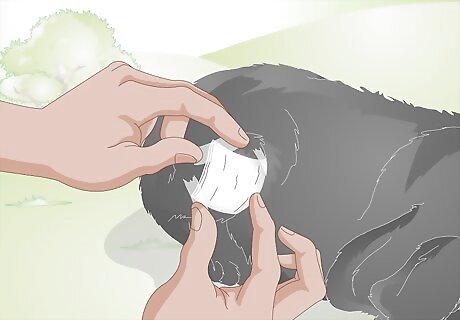
Administer first aid if you can. If there is a broken bone or an open wound and you have a first aid kit, consider trying to stabilize the injury with a homemade splint, gauze pads or wrappings until you can get to the vet. If you don't have a first aid kit, you can use your own clean shirt, a towel, a blanket, or anything else that is clean and handy. Check out this helpful wikiHow article for more information on splinting a dog's leg. Use a clean rag or cloth to apply pressure to any bleeding, open wound. This will help to stop the bleeding until you can get help from a vet.
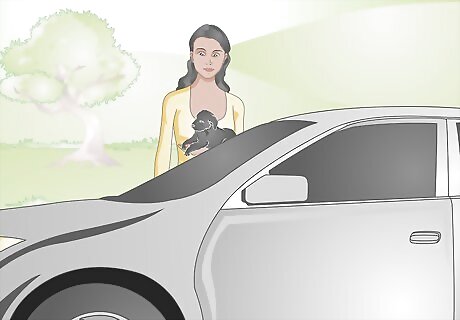
Move the puppy into your car. If the dog can walk, lead it to your car and place it into the back seat. If the dog's injuries are too severe, you will need to pick up the dog. In this case, try to wrap the puppy in a towel, blanket, or shirt before you pick it up and be sure to keep your face away from its mouth to protect you from bites. Move quickly and carefully, and try not to move the dog too much because you could make its injuries worse. The dog might be frightened while you move it, so speak in a calm, soothing voice to reassure it. If it's a small puppy, consider placing it in a cardboard box or pet carrier. This can help keep it safe while you drive. Otherwise, ask someone to come with you and have them hold the puppy wrapped in a towel or blanket.
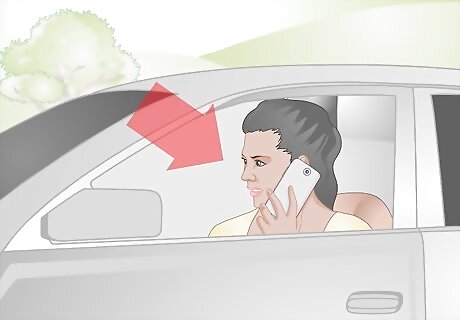
Call the emergency veterinary clinic. This will allow you to speak to a professional about the dog's injuries and to get advice on how to get the puppy to the clinic for treatment. This will also ensure that the clinic is ready for you when you arrive with the injured puppy. Try to describe the dog's size in pounds, approximate age if you can guess, and what you think its injuries might be. For instance, the puppy may have been hit by a car, attacked by a bigger dog, or may seem to have mange or a severe case of flea or tick infestation.
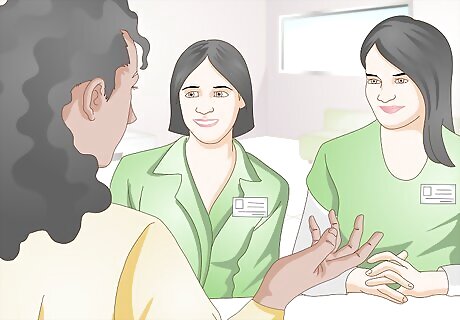
Find someone else who can help if you can't take the puppy to the vet. If you cannot afford to take the injured puppy to the vet, try calling your local animal control or animal welfare department. These groups can usually help, or direct you to other groups who can. You can call them directly, or call your local police department's non-emergency number for more information. This is usually easiest during business hours on weekdays, but don't give up if you can't get ahold of someone. If you live in a major city, search online for rescue groups. If the puppy looks to be a particular breed (or a mix containing a particular breed), search online for breed-specific rescue groups in your city or state (for instance, the Boxer Rescue of Oklahoma). You can also try using Facebook or other social media outlets to find help for the injured puppy. Many cities have pet lost and found groups or animal rescue groups, and members are often willing to help rescue injured dogs or even pitch in for veterinary bills. Search Facebook for "dog rescue" and the name of your city. If you have a big social network, share a picture of the puppy and a plea for help, and ask your friends to share your post.
Getting Medical Attention for the Puppy
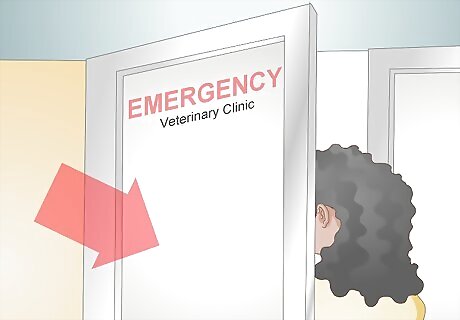
Take the injured puppy to an emergency veterinary clinic. You should be aware that when you take the puppy to the clinic, you will have to pay for its treatment. If the dog has extensive injuries, the bill might be quite high. However, if the dog has moderate to severe injuries, veterinary aid is a necessary part of caring for the dog.

Tell the emergency vet that this dog is a stray. Tell the vet that you do not know the puppy's age or medical history, how long it has been a stray, the last time it ate or drank, or the last time it received any care for its injuries. This will let the vet know that they need to make a complete examination of the dog for its overall health and wellbeing, in addition to caring for the puppy's injuries. In addition to assessing the pup's injuries, the vet will probably test for: Parvovirus Ringworm fungus Bacterial Dermatitis Mange Internal parasites, such as worms Ticks and fleas Ear mites

Consider signing over your rights to the puppy in exchange for free service. Some veterinary clinics will provide free services to stray animals, but in order to receive these services, you are expected to give up all rights and knowledge of the animal you've found. This means that you cannot wait with the animal while it is being treated, or call the veterinary office for updates. If you do not have the funds to care for the dog, or if you are not attached to the pup, this might be a good option if it is available to you.
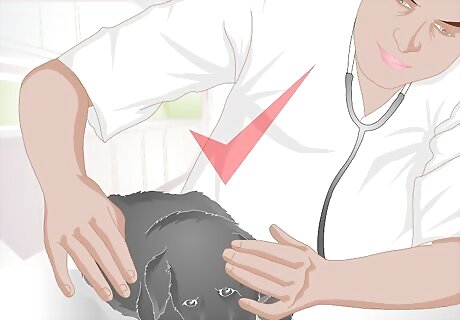
Let the vet do their job. In an event where you're seeing an injured animal in pain, it is easy to forget that the vet is specially trained to handle these situations. The vet does not need your questions, advice, or help, and offering these things will only slow the vet down and make it take longer for the dog to receive necessary treatment. In the event of serious injury, the vet might suggest euthanasia. Be sure to listen to what they have to say, ask for alternative treatment plans, and consider the level of discomfort the dog is experiencing and it's likelihood of recovery. When in doubt trust your vet's recommendations.
Taking Care of the Puppy at Your Home
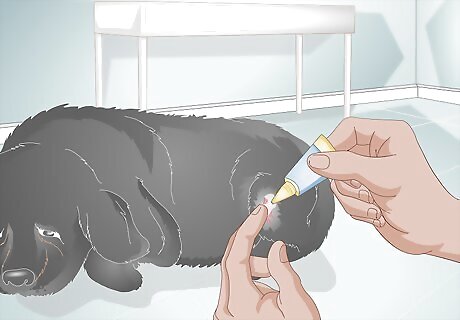
Treat any minor wounds or skin abrasions. The vet may recommend applying a certain medicated ointment or administering oral medications depending on the puppy's injury. Be sure to follow any directions that the vet gives, and don't miss any doses. Some medications like antibiotics or skin creams have to be administered even after the symptoms of illness or injury have passed. Be sure to use the full course of medication, and don't skip any doses.
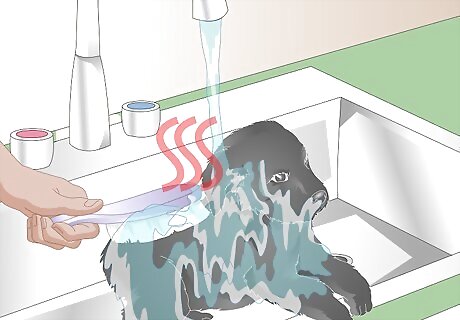
Give the puppy a warm bath, if it is safe to do so. If you are going to try to nurse the puppy back to health, you want to be sure it is clean before bringing it into your home. You can't use a flea or tick shampoo on a puppy younger than 12 weeks or so, but some veterinarians recommend using liquid dish soap such as blue Dawn to remove dirt and grease from the puppy's fur. If the puppy has ticks, pull them off at the head using a pair of tweezers and flush them down the toilet or smash them before discarding.
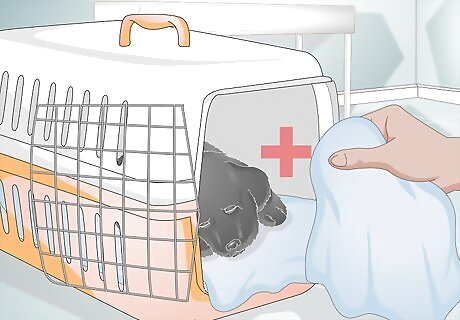
Give the puppy somewhere warm to sleep. Puppies that are six weeks or less need lots of warmth, since they are used to cuddling up with their mother and littermates. A pet crate with a few towels or baby blankets inside will serve as a warm place for him or her to get some rest while recovering from their injuries.
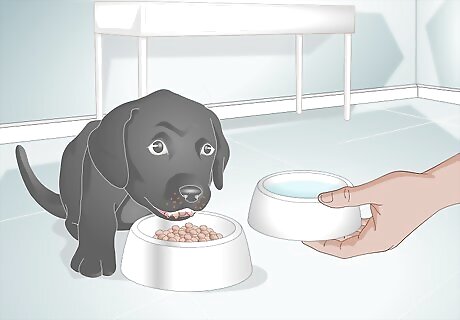
Give the puppy plenty of food and water as it recovers. Puppies' diets vary based on their age, so it is important to ask the vet for an estimate on how old the puppy might be and what the vet recommends for it to eat. A very young puppy will need to be bottle fed using a special puppy formula, but puppies can eat dry puppy food starting at around five weeks of age. You can get the proper food at your local pet store. Ask the vet if he or she recommends a special diet while the puppy recovers. Sometimes a critically ill or injured dog will need a critical care diet, which is easier to digest and more calorie-dense for a dog who has a lower appetite due to illness.
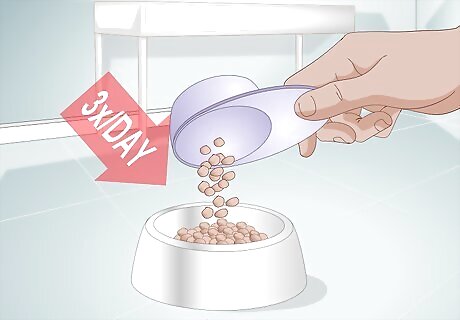
Feed your puppy according to its age and size. For example, a seven week old, seven pound puppy will need to eat about half a cup of dry puppy food three times a day. Always have a bowl of clean, cool water available for your puppy.
Trying to Find the Owner
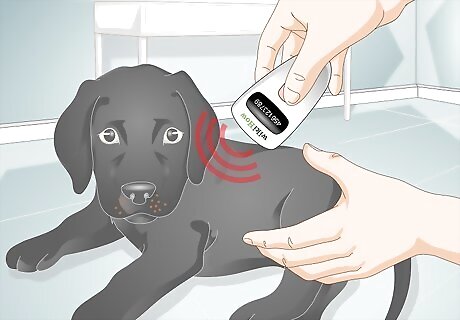
Look for a microchip. After the puppy has been treated for its injuries, have the vet scan it for a microchip to see if it has an owner. It is possible that the puppy managed to escape from its home and that its owner is looking for it. If the dog does have a microchip, make sure that you contact the owner. Sometimes the vet will offer to board the puppy until its owner can pick it up.

Take the dog to a trusted animal shelter. If the puppy has no tags, nor a microchip, and you are unable to keep it, take it to a local animal shelter. Taking a stray animal to the shelter is still the quickest way to reunite a lost pet with its owner.
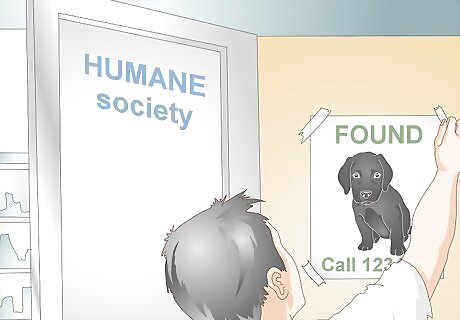
Post fliers of the puppy. If you choose to keep the puppy while you search for its owner, post fliers of the dog along with your contact information in heavily trafficked areas of your town. These fliers might help to reunite the owner with the puppy. Here are some places you might post fliers: Grocery Stores Veterinarian Offices Humane Society Local Animal Shelters Telephone poles at busy intersections College Campuses Social media sites, like Facebook or Nextdoor
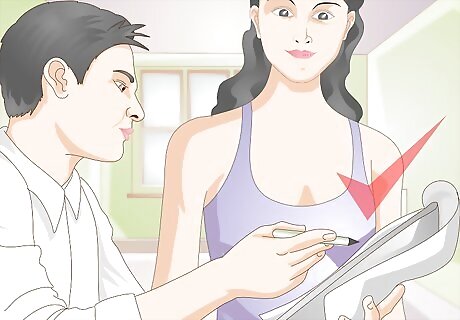
Verify the owner. If someone contacts you stating that they are the owner of the puppy, ask questions to make sure this is true. You might even ask for proof of ownership, such as pictures of the pup, the dog's ID tags, vet records, or an adoption contract. You should also offer to personally deliver the puppy to the owner's home so that you can make sure that the pup is well cared for and lives in a loving home.
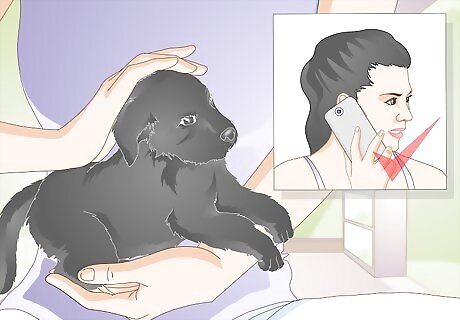
Adopt the pup. If you are unable to locate the owner of the puppy, you may choose to adopt the dog. In order to adopt the puppy as your own, you need to check the laws for dog ownership in your city or state. [Image:Take Care of an Injured Stray Puppy Step 8.jpg|center]] In some areas, you will need to contact the animal control agency or the humane society to report finding the animal, prove that you've made a reasonable attempt to find the owner of the dog, and demonstrate that you want to adopt the puppy. You will need to get the puppy vaccinated, licensed, and microchipped. You should also get a collar with ID tags for the puppy. Make sure you shop for pet supplies ahead of time! You'll need a leash, harness, dog bed, playpen, and crate, along with tick prevention medicine and plenty of toys.










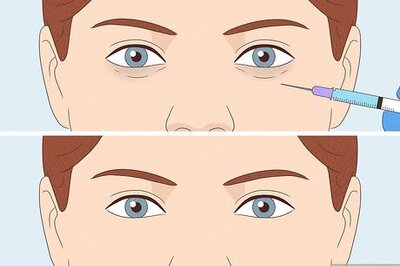




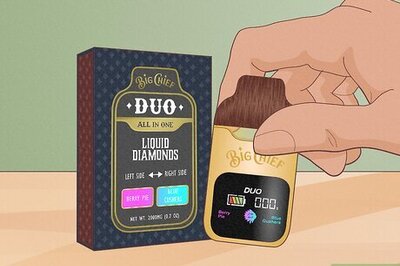



Comments
0 comment